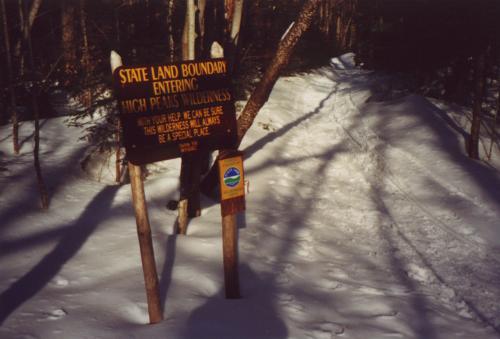
hikers to state lands, is located along the Calamity Brook trail, which connects
the Upper Works trailhead to the Flowed Land - Lake Colden region. The sign reads:
With your help we can be sure
this wilderness will always
be a special place
 |
| The sun sets on another day in the High Peaks
Wilderness. This sign, welcoming hikers to state lands, is located along the Calamity Brook trail, which connects the Upper Works trailhead to the Flowed Land - Lake Colden region. The sign reads: With your help we can be sure this wilderness will always be a special place |